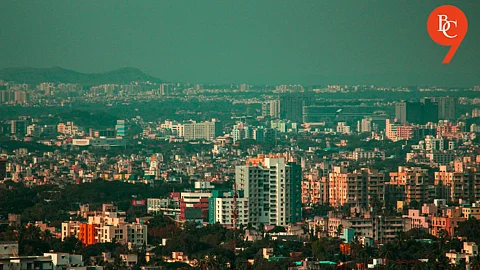

NITI Aayog aims to transform Pune into a $500 billion economy, with a four-month plan focusing on untapped sectors and regional development.
Urban challenges such as slums, limited metro coverage, and lack of public spaces need urgent attention for global-level development.
New economic focus areas include urban tourism, agri-processing, R&D, innovation, and improved public infrastructure.
Pune, 6th August 2025: Pune is set to undergo a major economic transformation as NITI Aayog CEO B V R Subrahmanyam announced plans to make the city a half-a-trillion-dollar economy. Speaking at a stakeholders’ meeting in Pune, he instructed local officials to prepare a comprehensive economic vision plan for the region within the next four months.
He highlighted that the central government has already allocated ₹1 lakh crore for the ‘Urban Challenge Fund’. While cities like Mumbai, Surat, Varanasi, and Visakhapatnam were included in the first phase, Pune will be part of the second phase along with Ooty, Bhubaneswar, and Cuttack.
Over the next few months, consultations will be held with industrialists, citizens, and political leaders to tap into unexplored sectors of the local economy.
According to Subrahmanyam, Pune's current growth rate is 5.5%, which falls short of its true potential of around 10%. He pointed out that while Pune and Pimpri-Chinchwad have seen considerable development, surrounding areas remain underutilized. The new plan aims to expand economic activity across the entire district.
Urban infrastructure is another key focus. Subrahmanyam raised concerns about Pune's slum population, which stands at 25%, far above the global average of less than 5%.
He said that for Pune to match global standards, this figure must be reduced significantly. He also noted the city’s limited metro network and emphasized the need for at least 200 km of metro rail, along with better public spaces like parks and open grounds.
Currently, Pune’s economy is primarily driven by IT, manufacturing, and education. However, Subrahmanyam stressed the need to diversify. He cited Hyderabad as an example, where just two IT towers built by the state government helped transform the city into a tech hub. He believes Pune too has similar untapped potential, which will be identified during the upcoming consultations.
The region’s per capita GDP is already impressive at $4,300, twice the national average, and the overall economy is valued at ₹4 lakh crore. The goal is to push this figure to $60 billion by 2024.
Subrahmanyam also suggested Pune explore urban tourism as a new growth avenue. He noted that while cities like Goa are known for leisure tourism, global cities such as London and New York attract tourists for business events and conferences.
Pune, with its cultural and industrial base, can tap into this trend. He further added that sectors like agri-processing, R&D, innovation, and startups should also be strengthened to support the city’s future growth.
